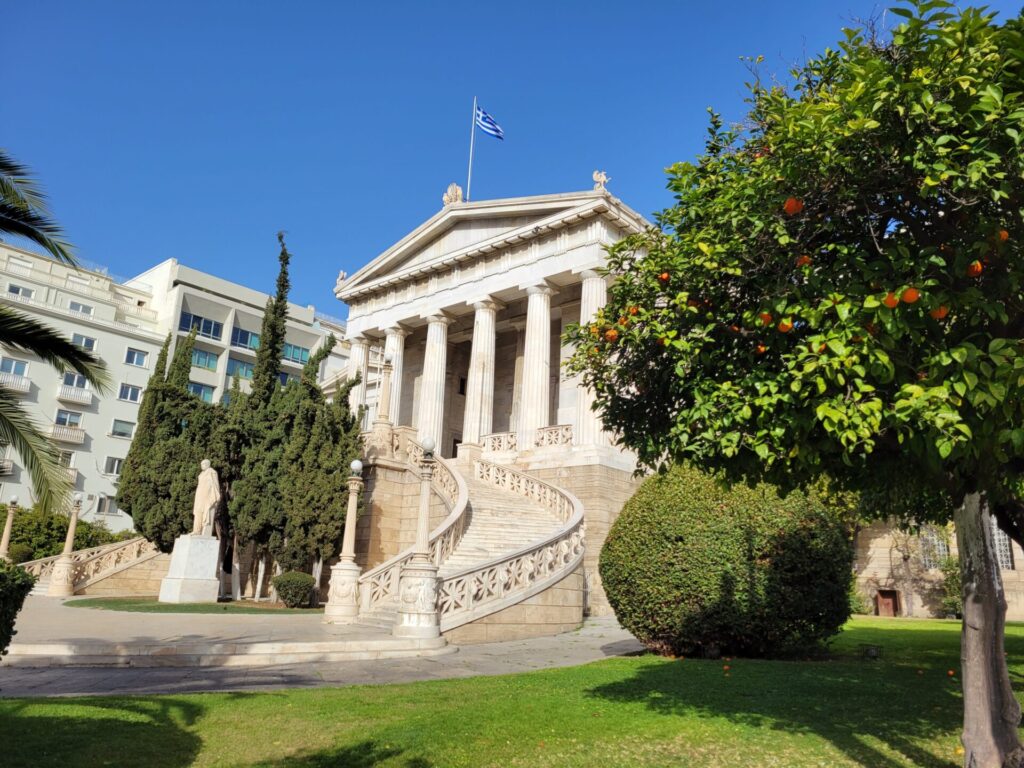
Athens is a classic city with some dirt under its fingernails. It’s filled with breathtaking marble antiquities and parks with awesome viewpoints. But despite the elegance of the ancient ruins, there’s an overall grittiness that we hadn’t found elsewhere. Excessive traffic noise and ample graffiti create a rougher and more chaotic vibe than found in similar-sized cities. Luckily, the many museums and pedestrian only spaces help to keep it from getting too overwhelming. Athens is also Europe’s hottest city, so avoiding the scorching summer heat is highly recommended.
Even though winter is the rainy season for the area, Athens escapes most of it. The city is in the rain shadow of the Pindus Mountains, so the surrounding areas get much more rain than the city itself. During the winter season, many site admission fees are half price as well, making it a great time to visit. Anytime of year provides great views of the sprawling metropolis of 3 million people, which spreads over the rolling hills of the dry Mediterranean terrain. There are no tall buildings (nothing higher than 5 stories) and plenty of hills, so good viewpoints abound.
The Acropolis
The undisputed top site in Athens is the Acropolis. Perched upon the precipice of the second highest hill in the middle of the city, it’s visible throughout the area. Its conspicuousness serves as a constant reminder of Greece’s glorious history to visitors and residents alike. No matter where we went in the city, we were always catching views of this archeological marvel. It reminded me of being in Paris and constantly noticing the Eiffel Tower off in the distance. It dominates the landscape and draws eyeballs like a tractor beam.
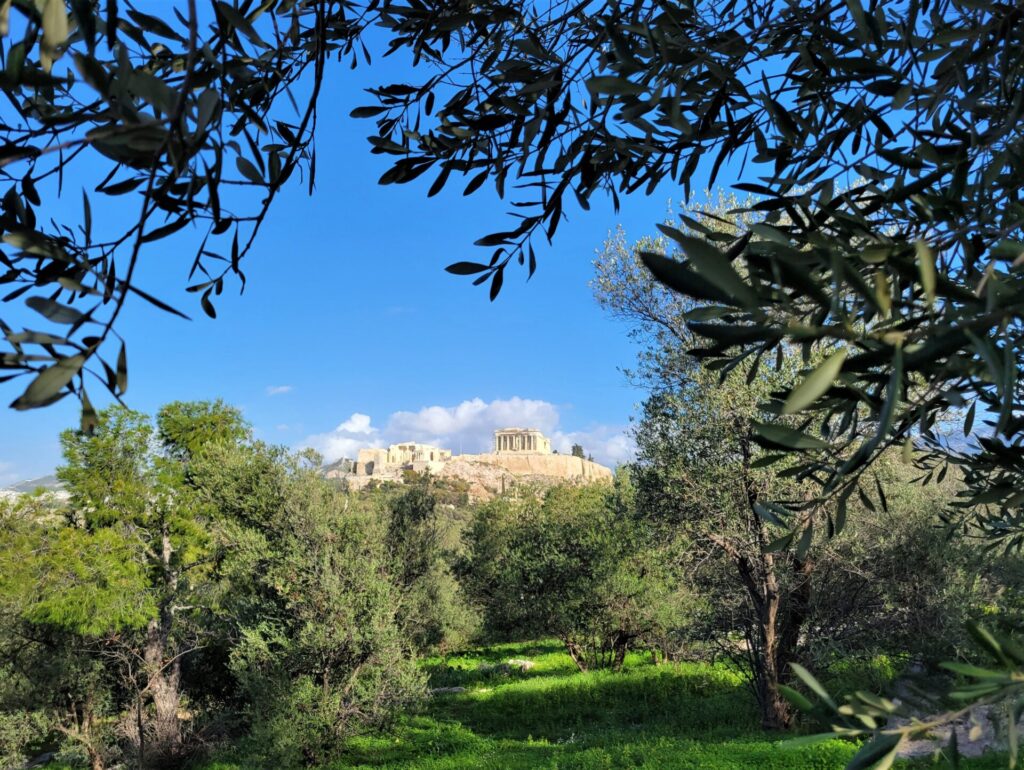
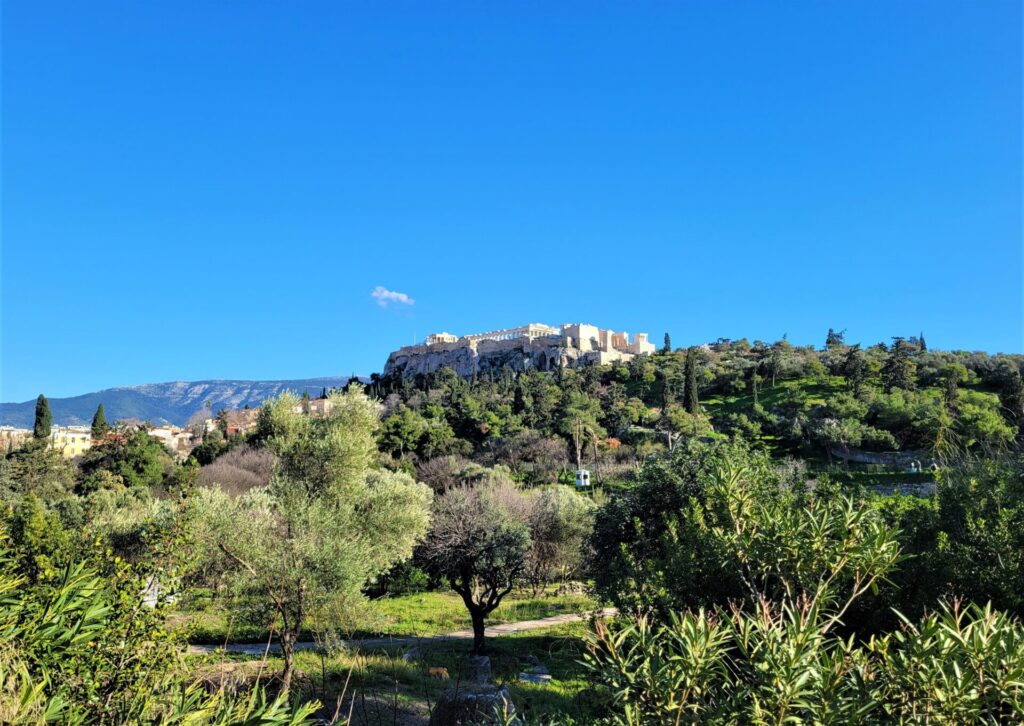
Visiting the Acropolis is even better. The structures look big from the surrounding area below, but up close those giant marble columns can make anyone feel ant-like. The whole complex of different temples and awesome 360 degree views make the Acropolis very special. The largest temple within, the Parthenon, is as impressive as expected. Dating from the 5th century BC, it doesn’t take much imagination to temporarily transport yourself thousands of years into the past.
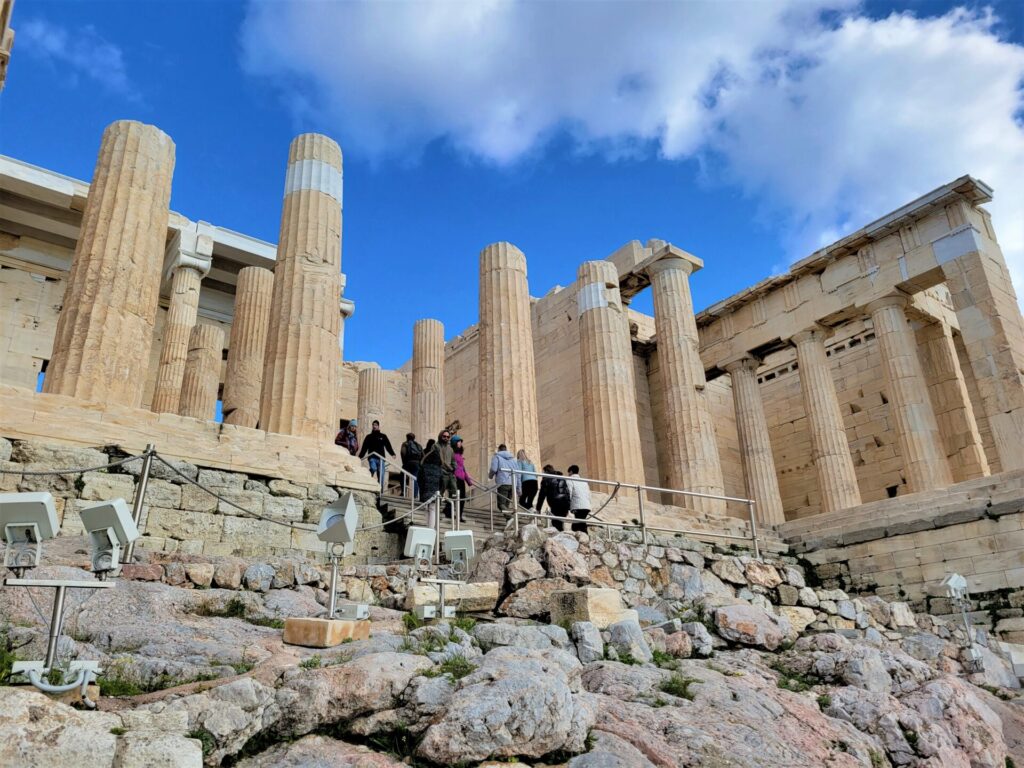
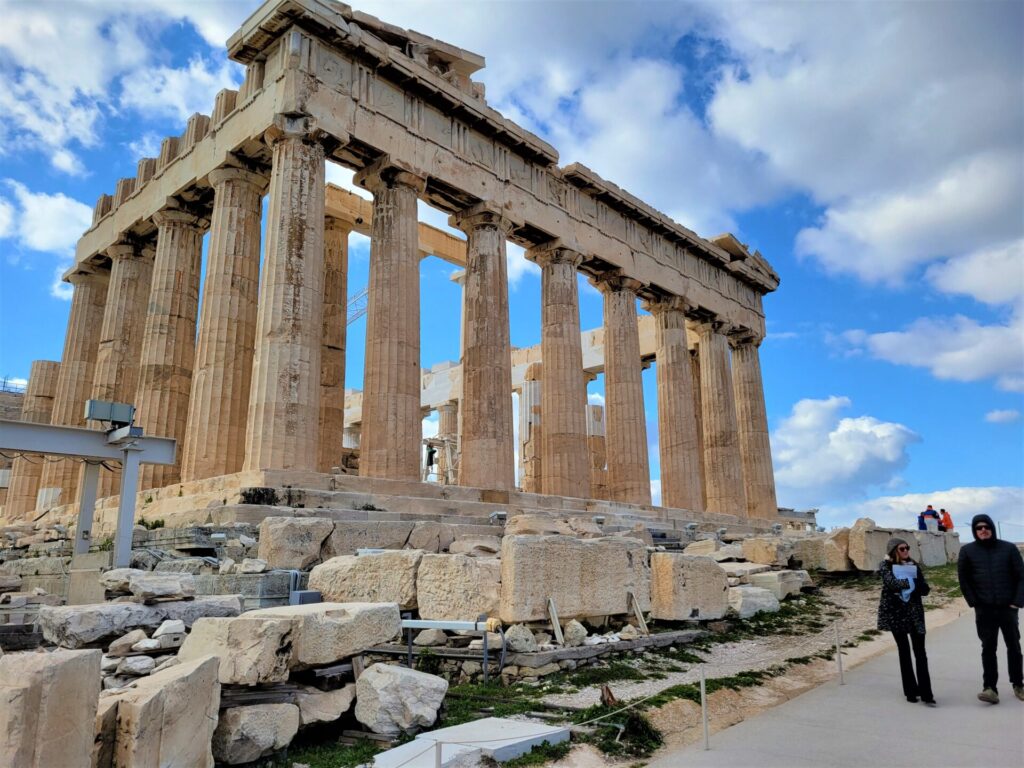
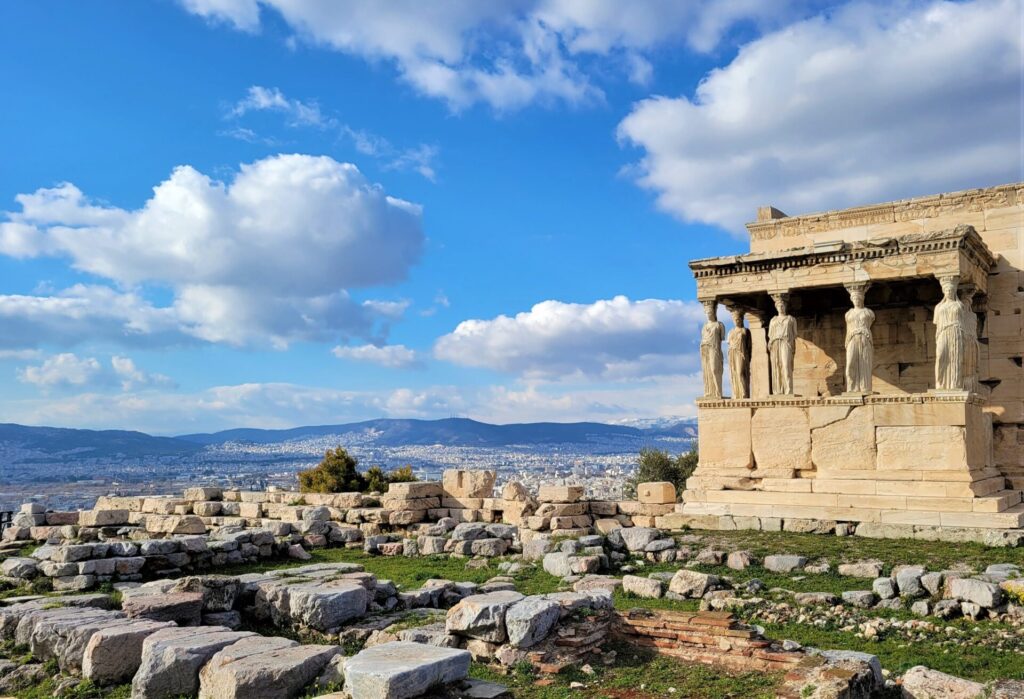
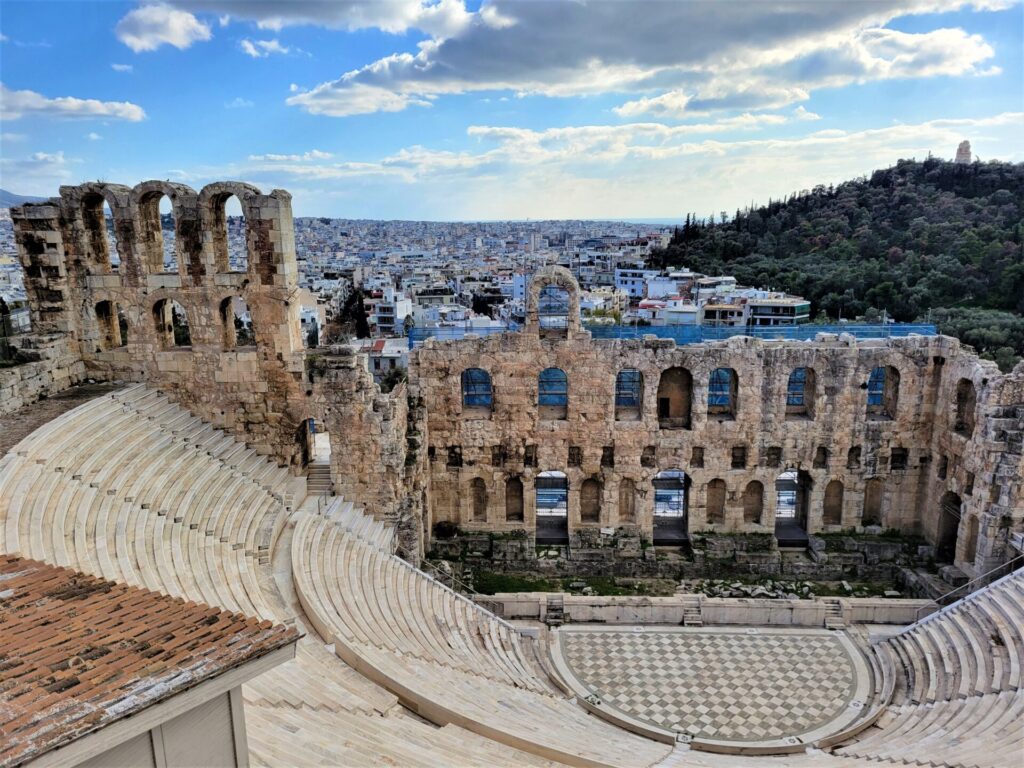
City Parks
One of our favorite parts of Athens were the parks that were scattered throughout the city. The park we visited most was the one that hosts the National Garden. Its meandering paths weave through flat manicured gardens that are filled with native trees and invasive parrots. We could hear the frequent and voluminous squawk of the green Monk parakeets (aka Quaker parrots) throughout the city. The park is next door to the original Olympic stadium too.
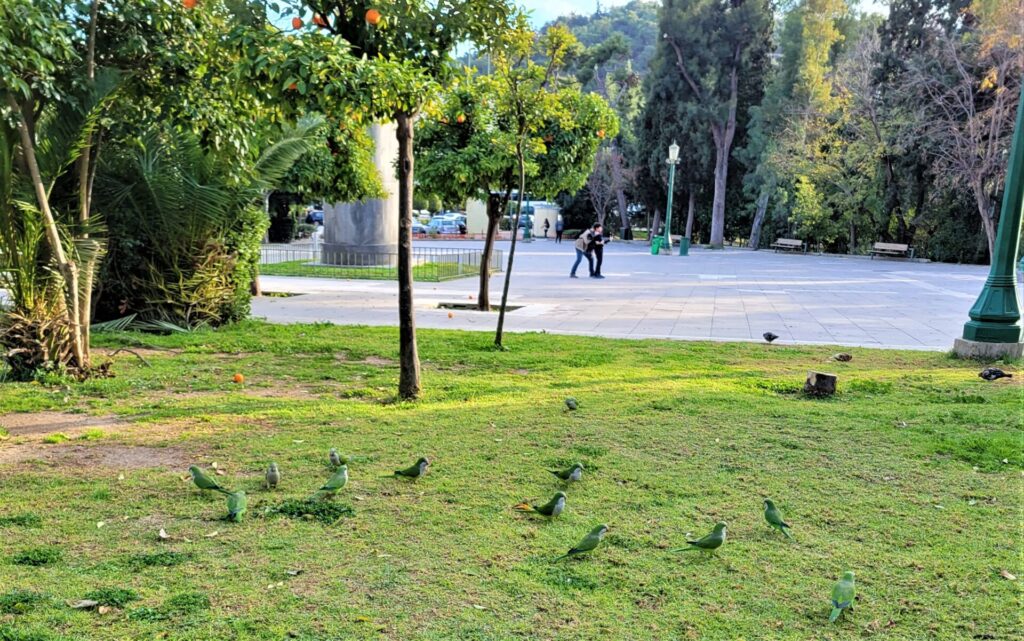
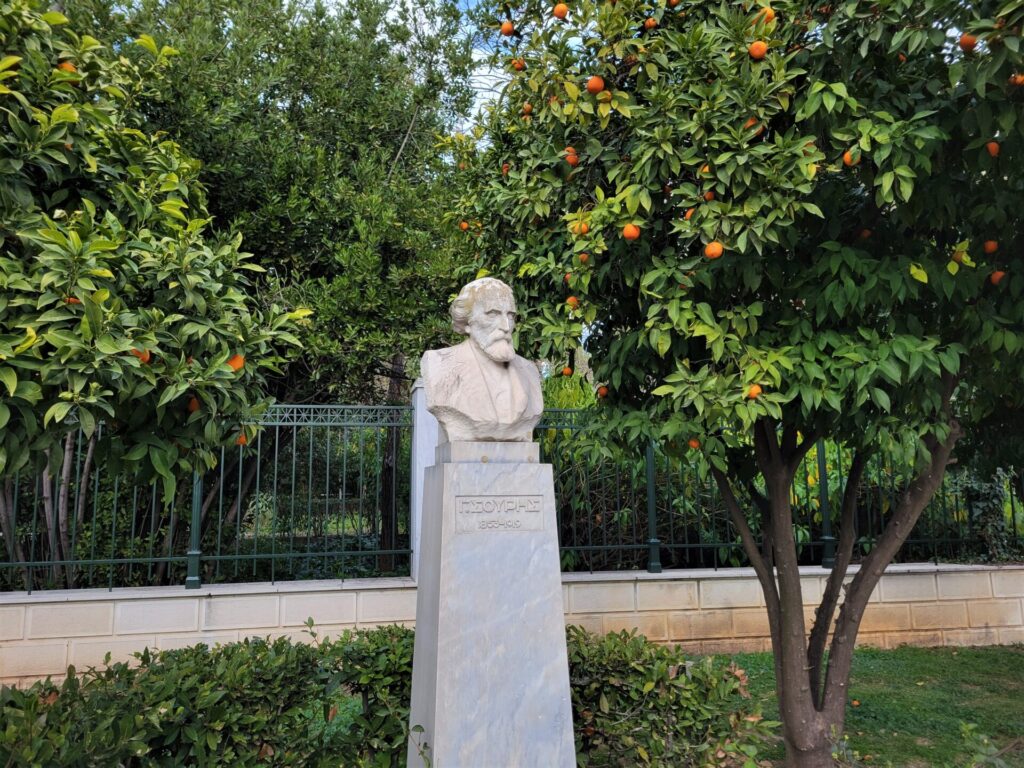
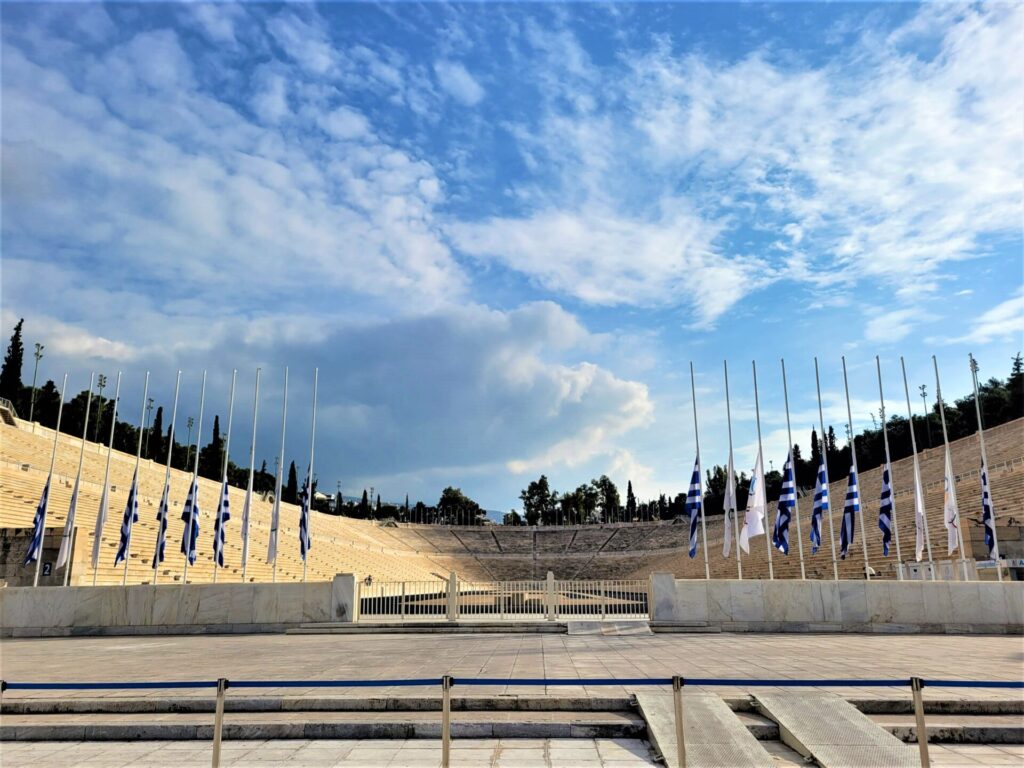
Aside from the National Garden, almost every other city park is located on hills and provides sweeping views of the surrounding area. Climbing up the hills also makes the excessive traffic noise fade away and provides a nice break from the chaos. The great views of the Acropolis are a nice benefit as well.
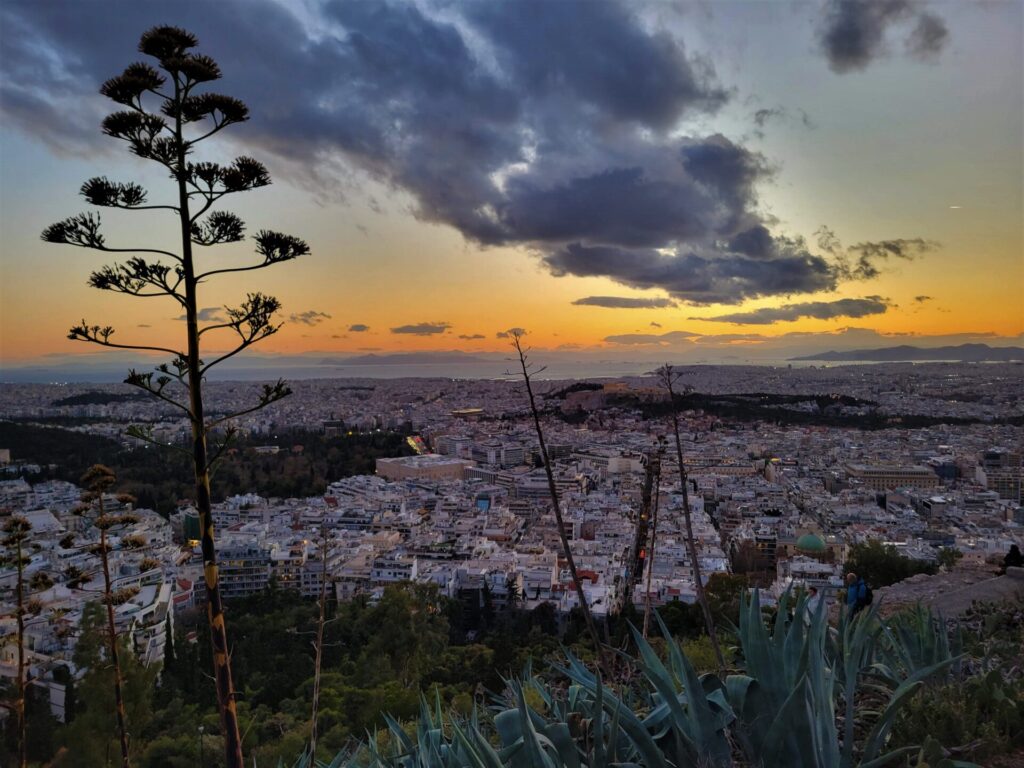
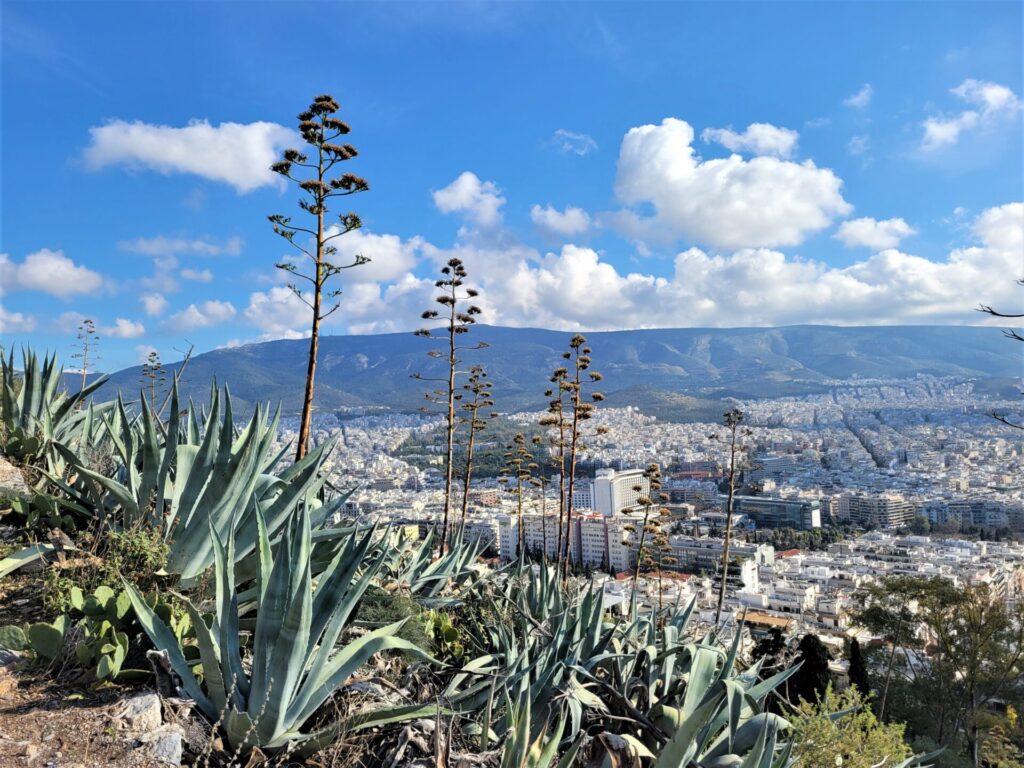
Since they are so hilly, many of the routes through the parks felt more like hiking trails than walking paths. But compared to most hiking trails I’ve been on, these were way fancier. Most places in the world just use wood to stop soil erosion on slopes. Not in Athens. They use marble. Yes, there are marble slabs throughout the hiking trails in the parks used as erosion stoppers. It serves the purpose just as well, but feels ridiculously elegant.
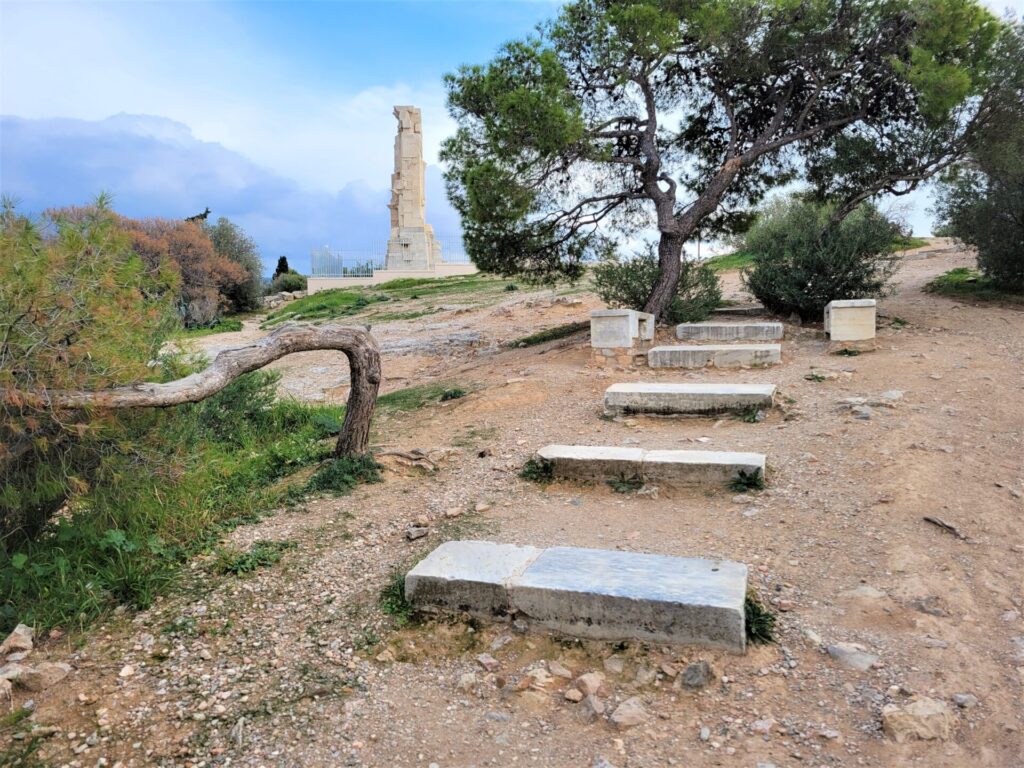
Orange Trees
Athens is home to about a gazillion orange trees and we never tired of seeing them. Visiting in the winter meant peak season for the citrus fruit. Wherever we went, the bright orange globes were popping out of the dark leafy-green background. It was a very pleasing contrast. The trees line just about every residential street and are planted in groves in the city parks. They are everywhere.
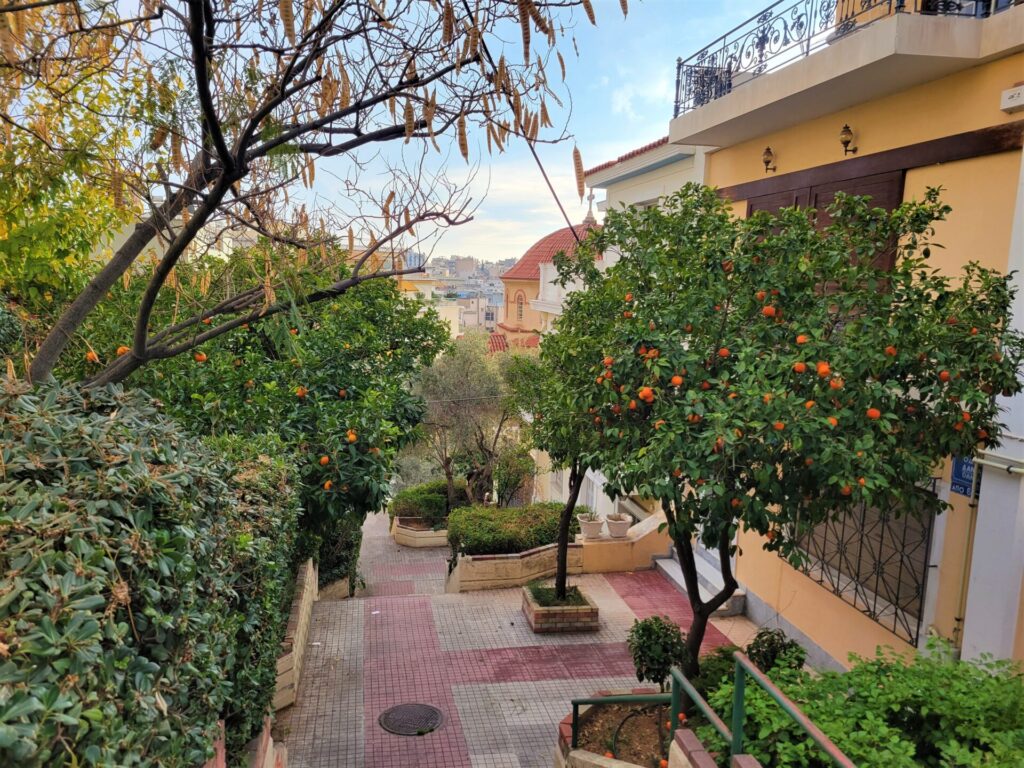
Judging from the amount of fruit on the ground though, they are mostly for decoration and not cultivated for eating. I often thought about picking one to try, but in the end decided against it. Bags of absolutely delicious navel oranges in the grocery store were about $2 for 4 kg (8.8lbs), so that helped me stick with the store bought kind. Still, they provided a nice aroma and the visual aspect was quite appealing.
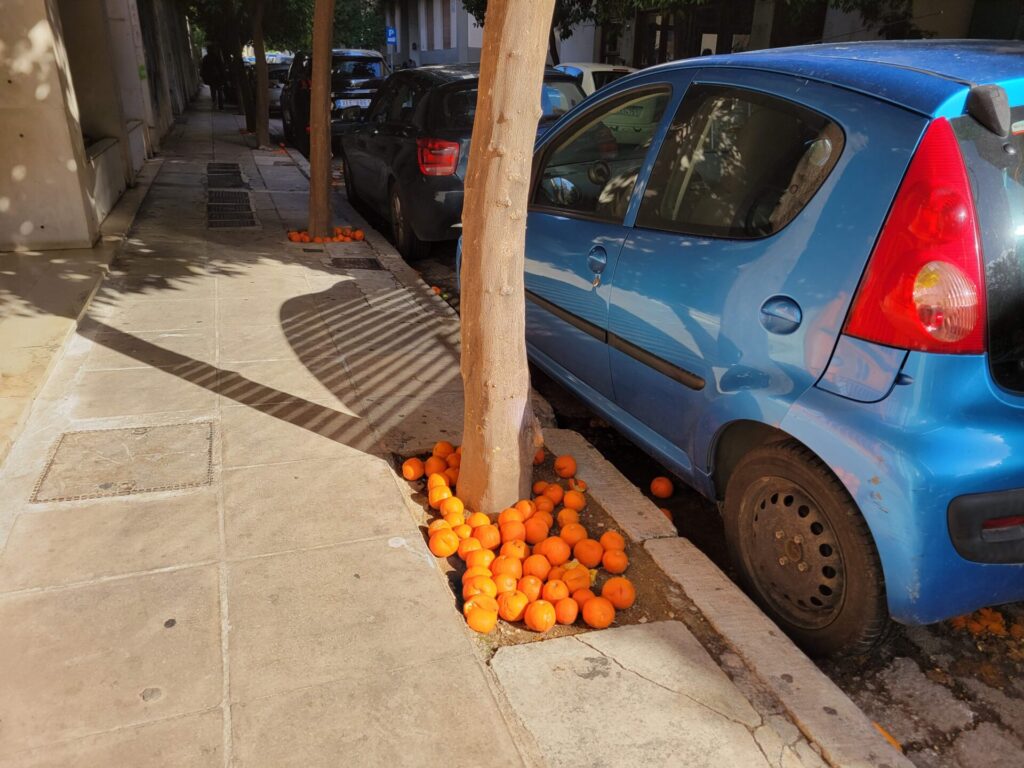
Graffiti And Street Art
Athens is often cited as one of the graffiti capitals of the world and there was a ridiculous amount of it. The volume greatly surpassed my expectations, which were not low. There were a handful of neighborhoods where almost every building surface lower than 6 feet was covered with a tag of some kind.
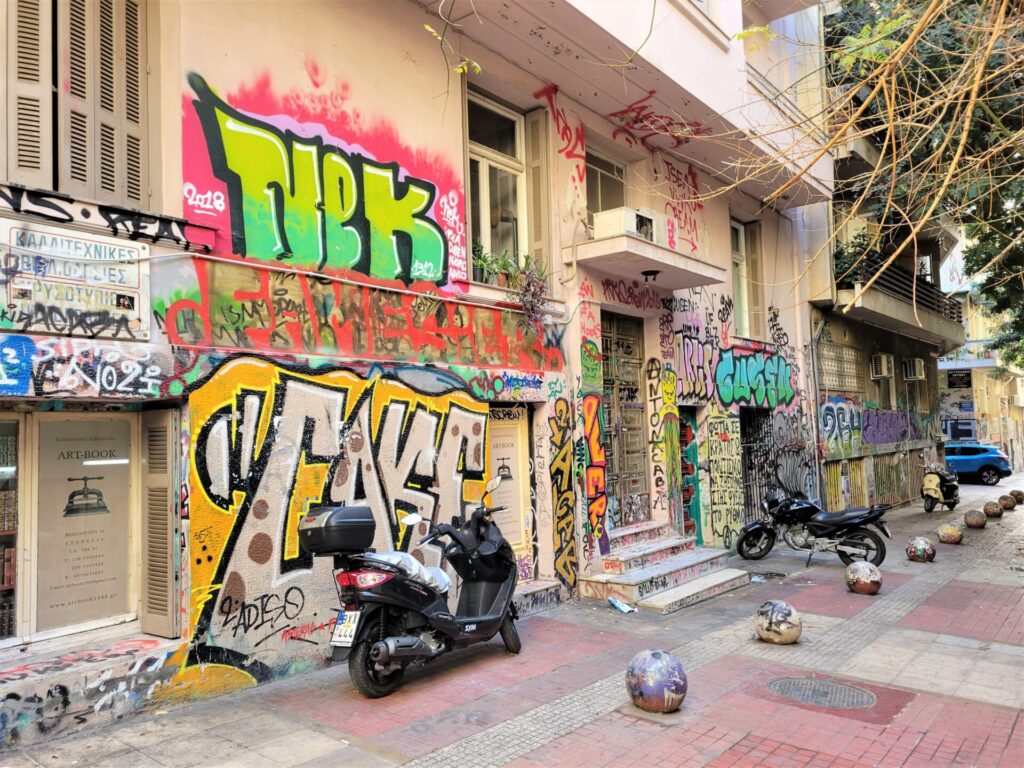
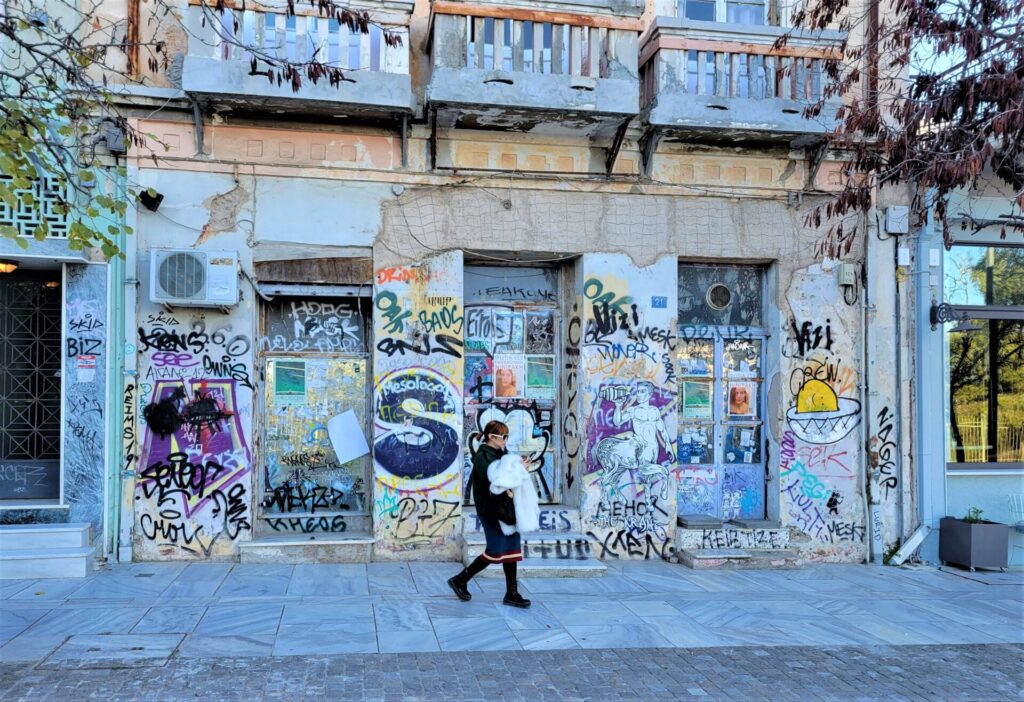
To be perfectly honest, a lot of the graffiti was underwhelming. Much of it was just single color scrawl thrown up in 30 seconds or less. That’s not to say that there weren’t some nice pieces, but they were overshadowed by the sheer amount of uncreative and boring tags. But the enormous volume meant that it was possible to find good urban art, even if it took some effort. As you might expect, we did our best to wade through the tangled mess in search of the hidden gems.

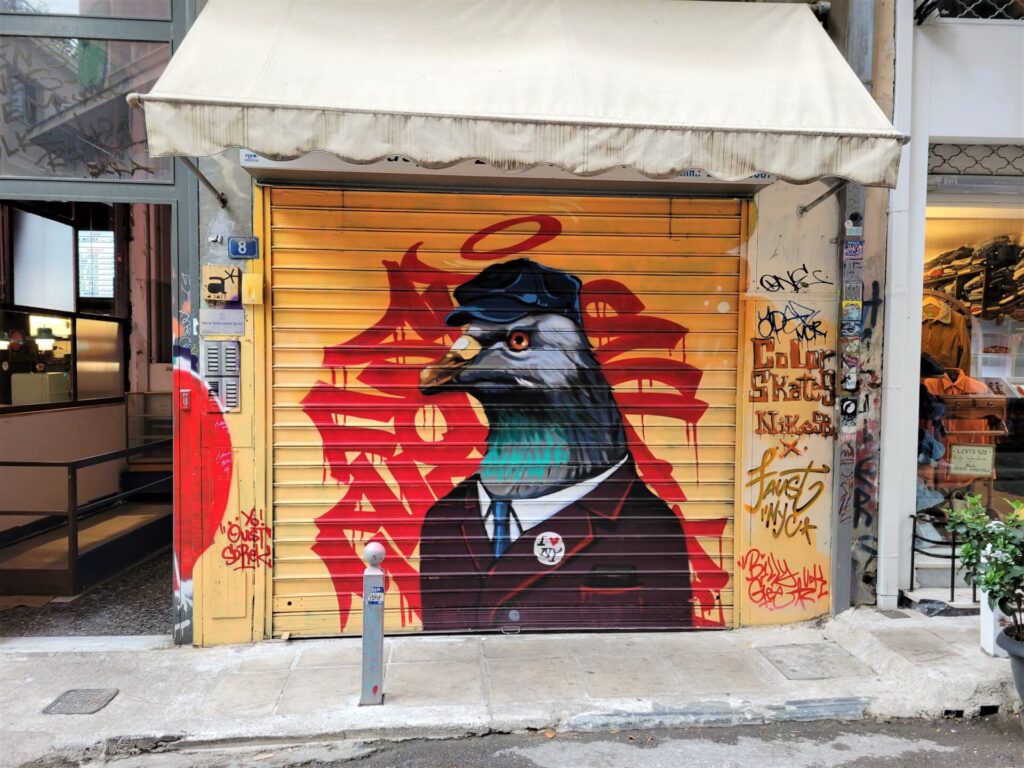
We found some good street art too. Some canvases were really large, spanning multiple stories. I definitely appreciate these, not only for their beauty, but also for their visibility. It’s nice to be drawn down a street because there’s a giant painting at the end of it. That’s way better than flipping a coin to decide which direction to wander.
Surprise Grittiness
Athens can be a gritty locale. The ample graffiti plays a role in the grit, but we also saw a lot more homelessness and encountered many more scammers than we had anywhere else since we arrived in Europe a little over a year ago. Some of this rough-around-the-edges vibe does serve to enhance the visitor experience though. The ancient marble buildings seem even more decadent in contrast to the blighted urban landscape. And as fans of graffiti art, we didn’t mind having it plastered everywhere.
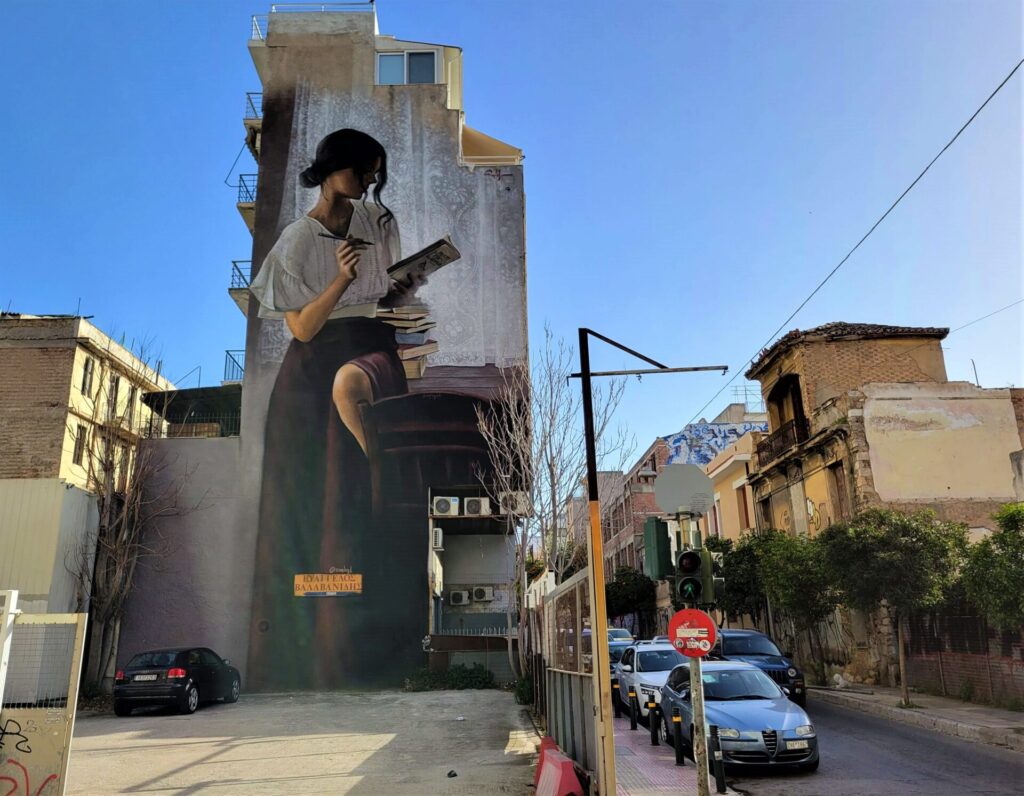
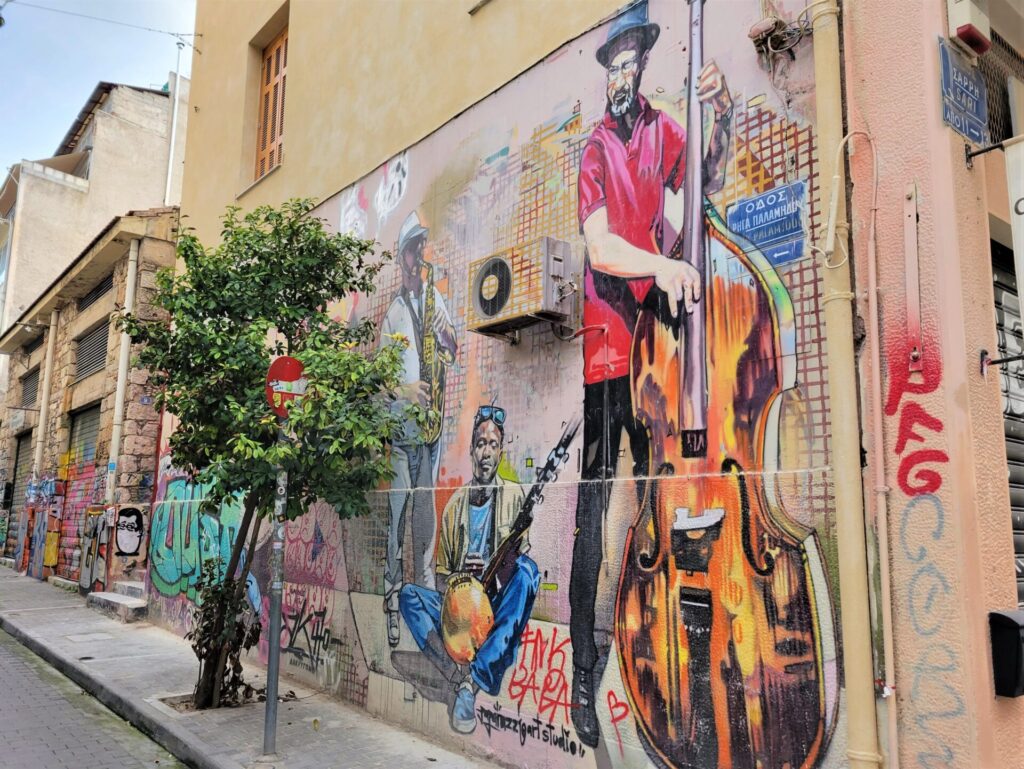
In searching for the graffiti needle in the sprawling metropolitan haystack, we would often wander random streets in different neighborhoods. Some of these areas were rougher than we had been exposed to recently. One afternoon we stumbled upon a group of junkies sitting in the middle of the sidewalk prepping a fix with their spoons and needles. Needless to say, it was a shock to the system and we quickly abandoned that search headed for greener pastures.
It’s been a long time since I was confronted with blatant hard drug use in the middle of a public space. It reminded me of accidentally stumbling into the Tenderloin neighborhood in San Francisco, although obviously not nearly as dangerous as it’s Europe, so none of these junkies have guns. I think our guard was down a little, partly because we weren’t able to recognize the signs of a bad area. Normally a bunch of graffiti serves as a warning sign, but that’s not really the case in Athens because it’s so prevalent even in the “normal” neighborhoods.
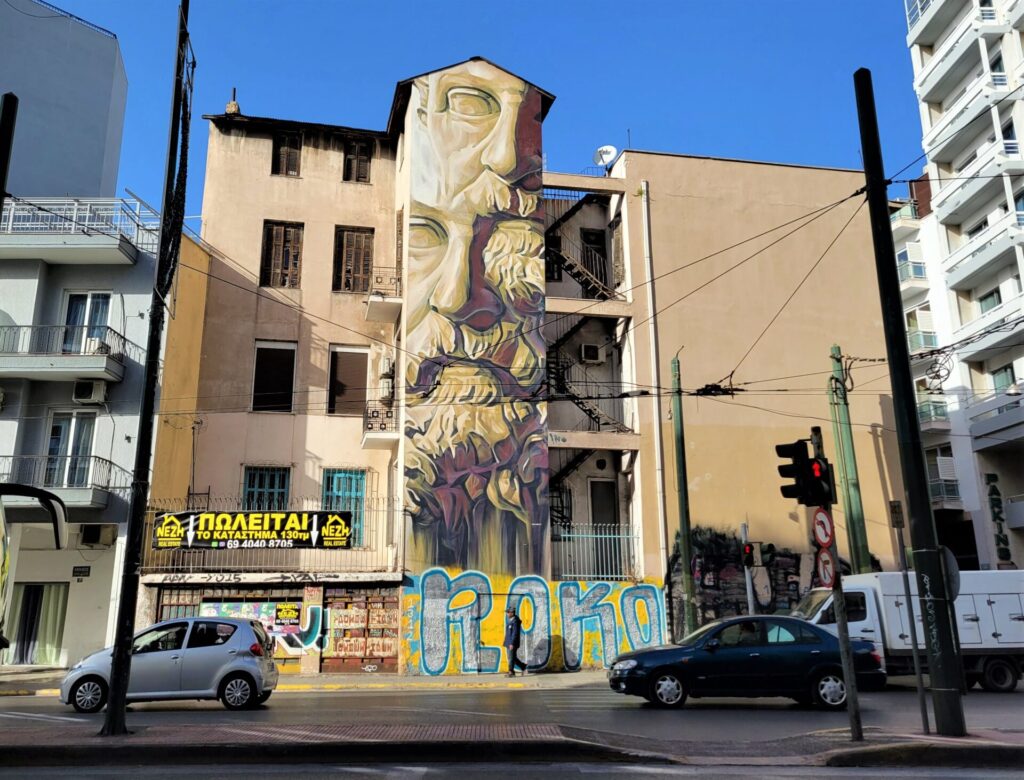
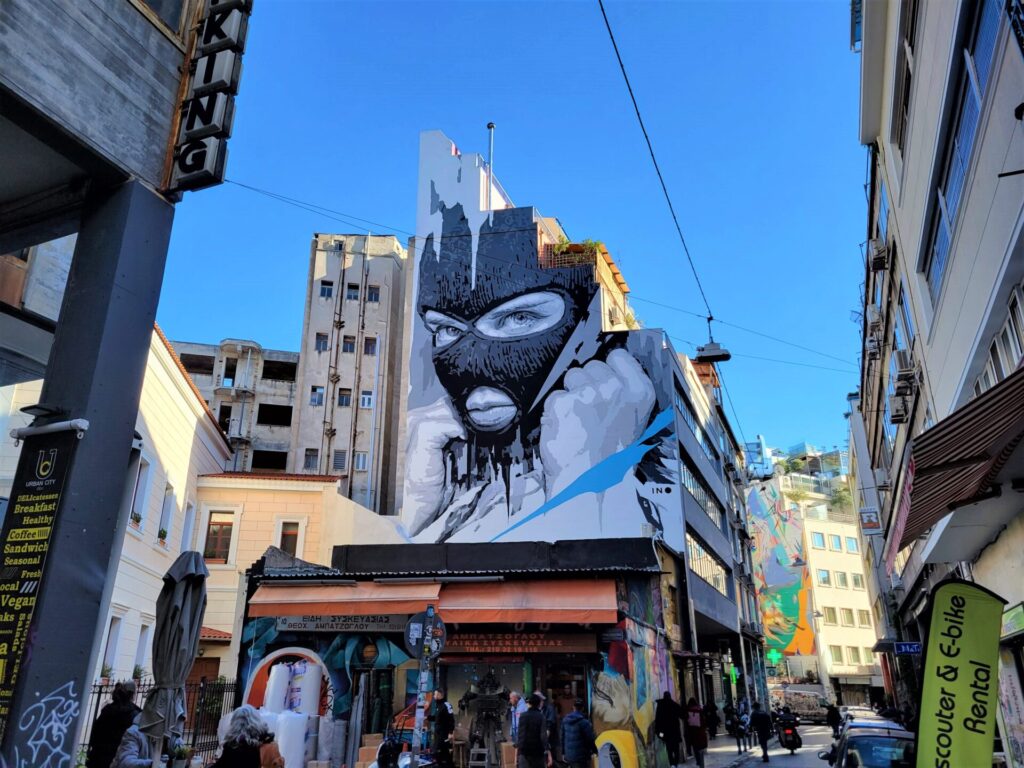
It also made us happy that we booked an apartment in a more upscale neighborhood. I’m not convinced it’s inherently more dangerous in those areas, even if we were somewhat startled by what we saw. But it certainly *feels* more dangerous, and that can be enough to negatively affect a stay. (Visiting tip: Avoid staying to the west and north of downtown. The south and east sides are much nicer.)
National Gallery
After the graffiti search ended, we went to find more traditional pieces. The best artwork from Greek masters can be found at the National Gallery. This large and modern building has multiple floors of Greek paintings and sculptures that span the last 800 years. The physical space is perfectly situated for art viewing. It’s an enjoyable way to spend an afternoon. I also really liked The Runner glass sculpture, which is a unique installation right across the street.
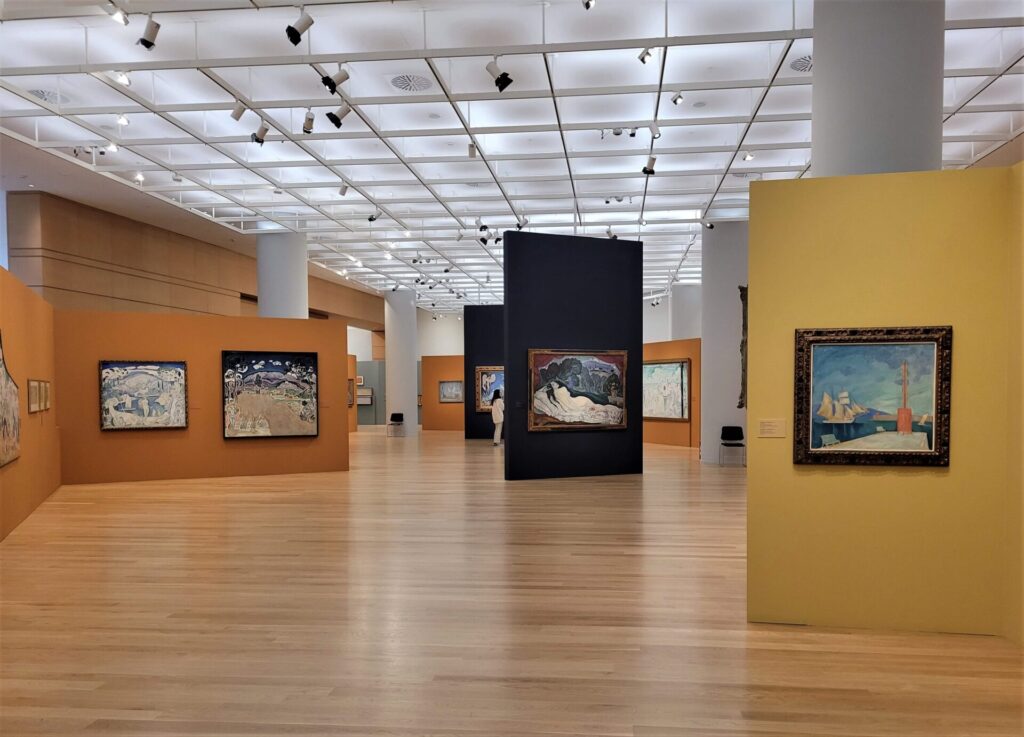
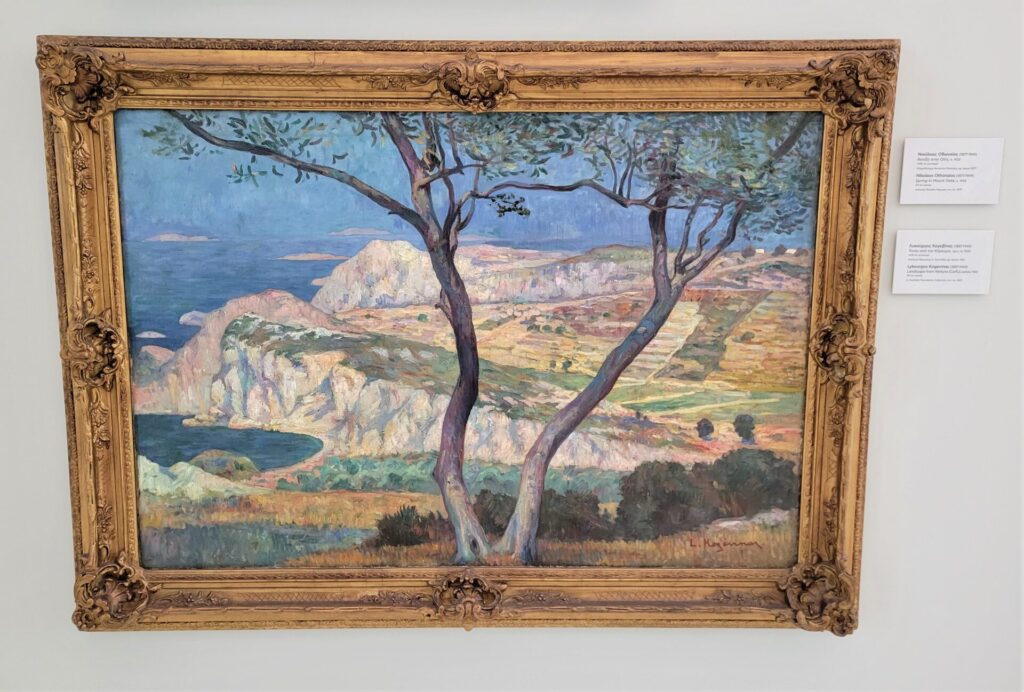

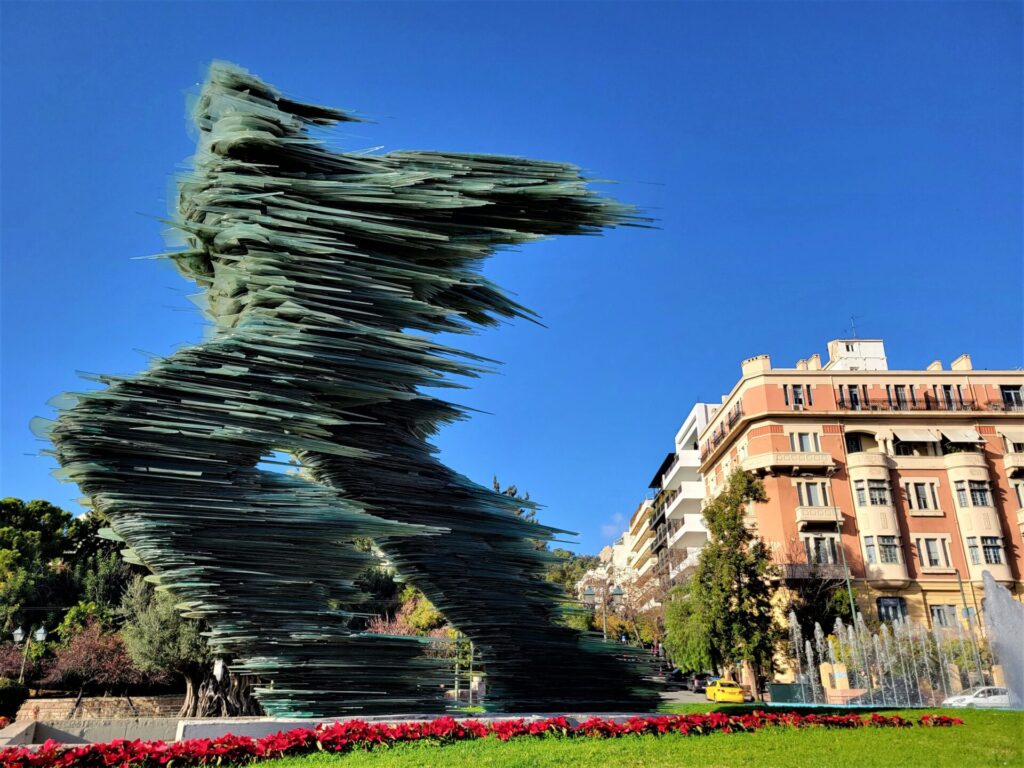
Goulandris Museum
The Goulandris Museum is a brand new museum that opened in 2019 and it was our favorite museum for art. It’s filled with paintings from the private collection of Basil and Elise Goulandris. They were art lovers and collectors with the means to accumulate paintings across a broad spectrum of famous artists like Picasso, Monet, Chagall, Kandinsky, along with plenty of local Greek artists. For whatever reason, we both found it fascinating to see what choices were made by these art lovers. They had the purchasing power to own artwork of any type and from any artist around, so we concluded that what they decided upon must mean a great deal. The lighting was also amazing. Many of the pieces looked like they were backlit, something I’d never seen before.
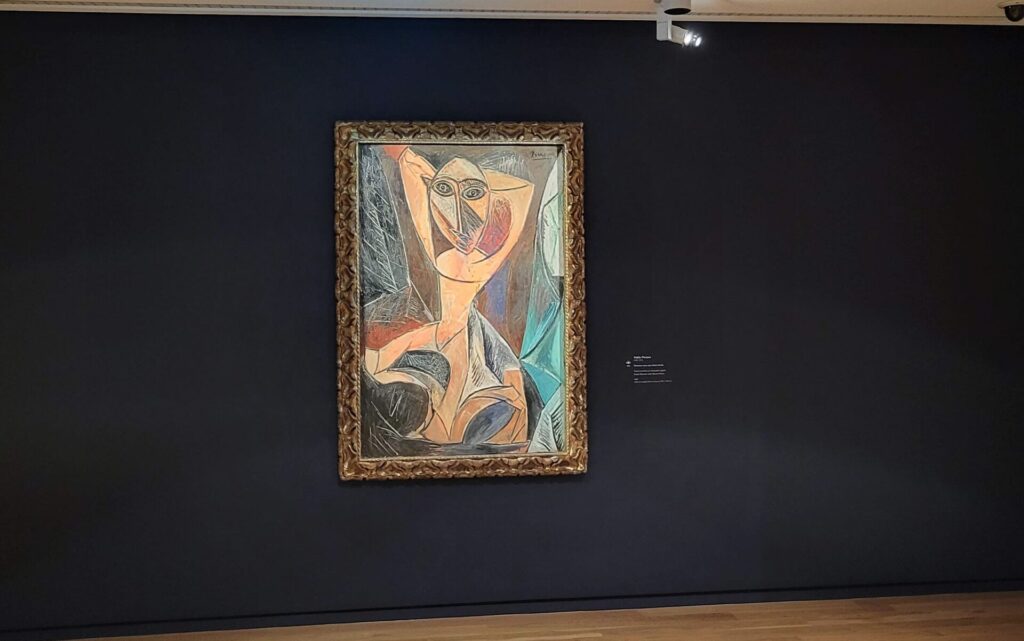
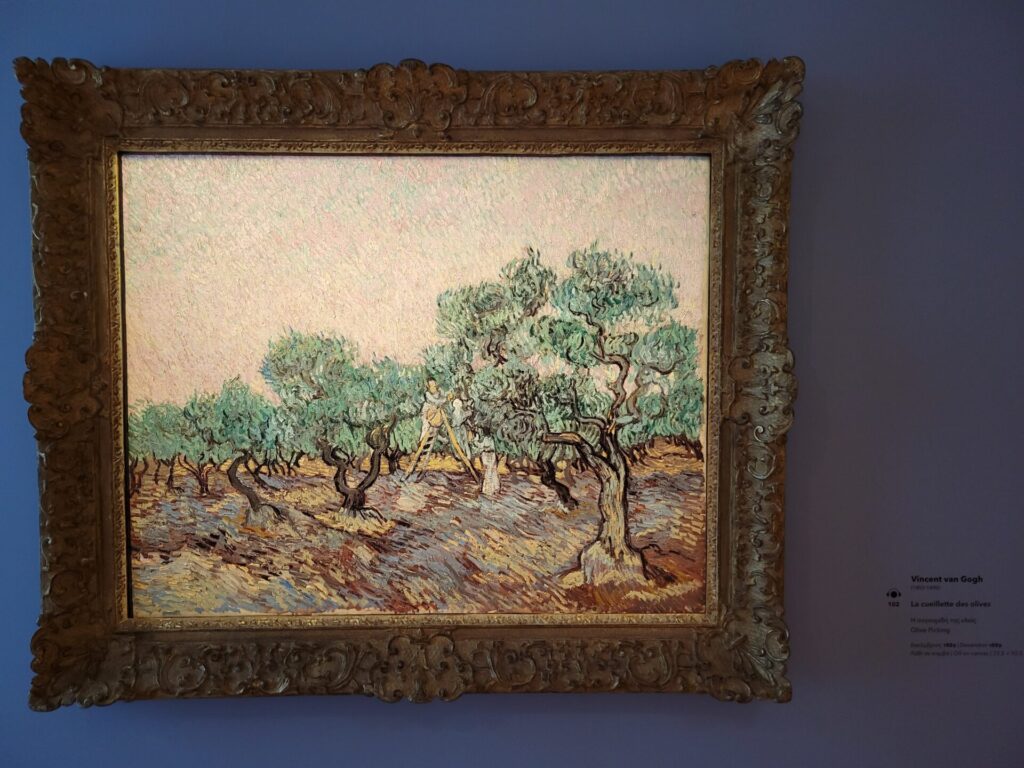

Where We Stayed
We rented a 2 bedroom 2 bathroom apartment in the Pangrati neighborhood, which is southeast of downtown. It was bright and sunny and the kitchen was fully stocked. It even featured some quality, heavy steel pots and pans that have stood the test of time. According to their stamps, they were made in West Germany! There was a little too much traffic noise for my liking, as the constant barrage of loud motorcycles seemed to never end, but otherwise we liked everything else about the place.
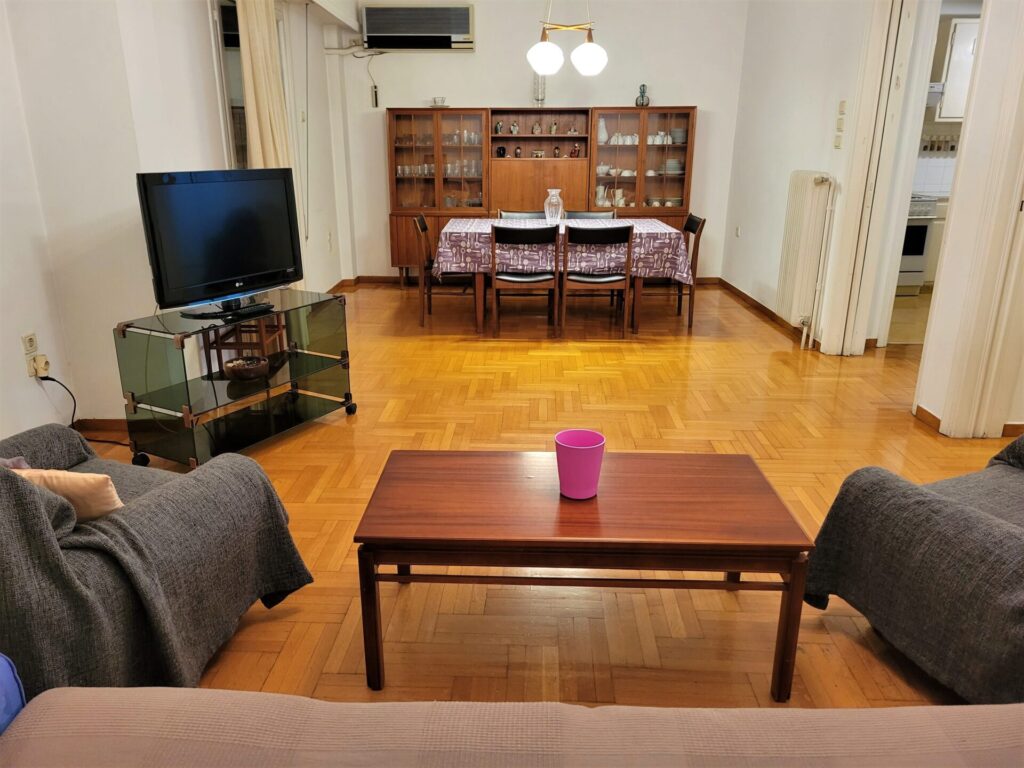
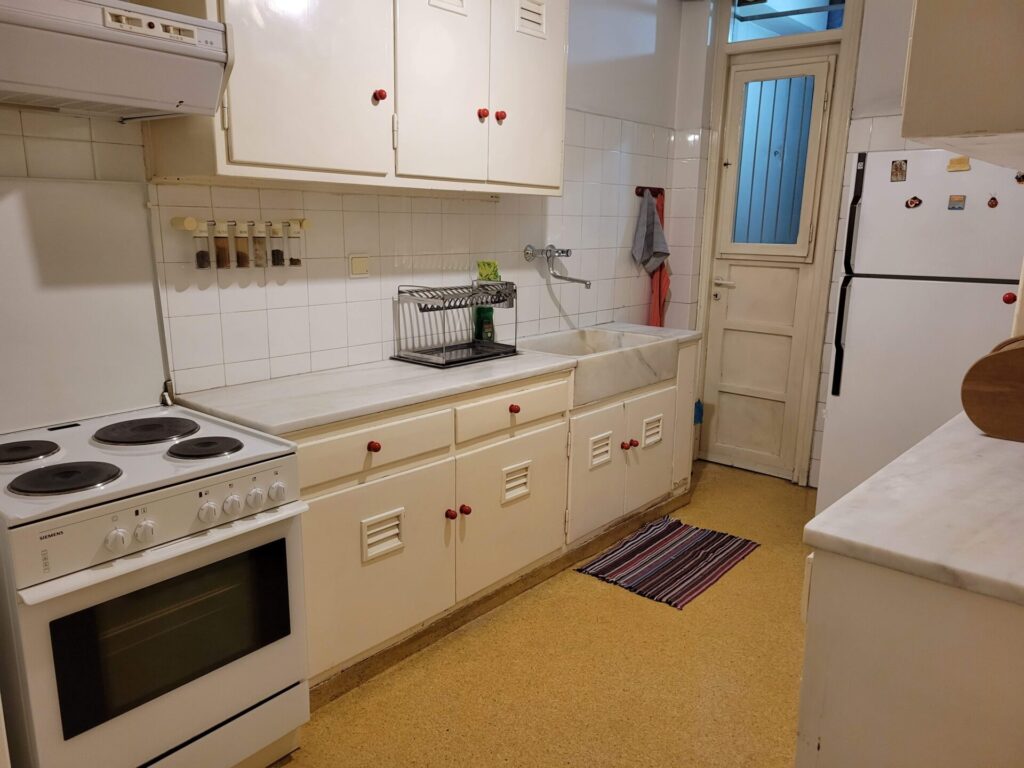
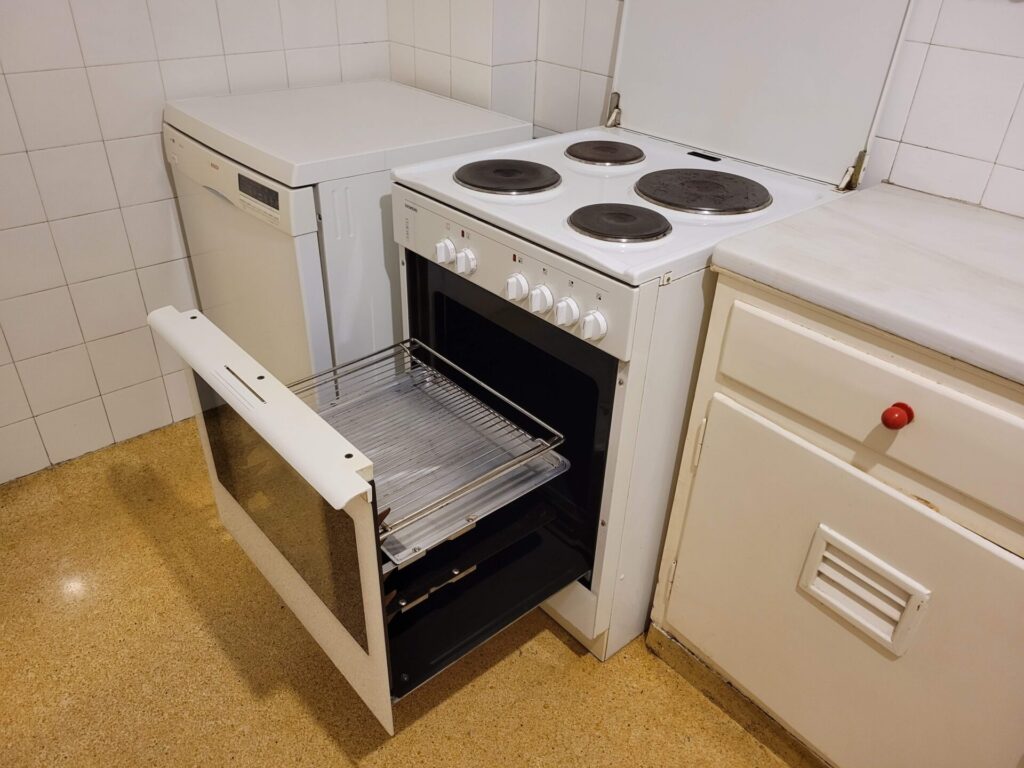
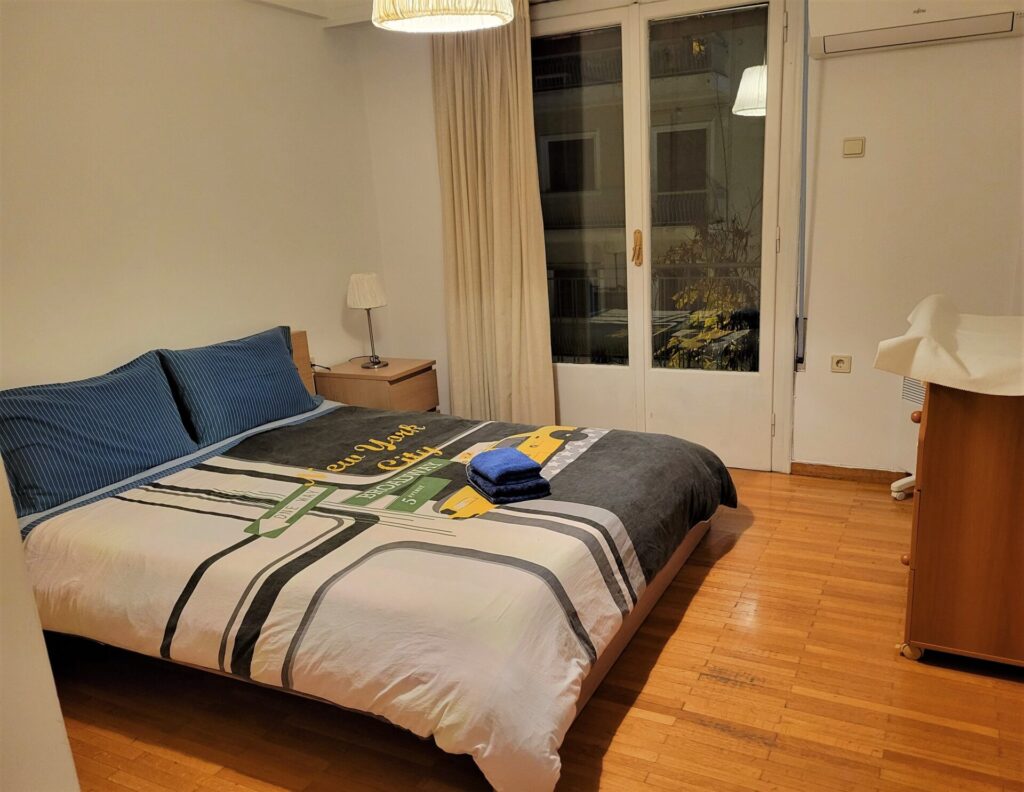
What We Spent
For a major European city, we found Athens to be quite affordable. During our 33 nights there, we spent a total of $2404. Adding in our regular bills that we pay no matter our location, like Netflix and insurance, our total spending adds up to $2608, or just under $80/day. That’s on par with what we spent in Budapest or Zagreb, and even cheaper than we were able to stay in coastal Croatia.
As a side note, we chose to end our Greece stay earlier than originally planned in order to see to a personal matter in the United States. This resulted in forfeiting a couple of Airbnb reservations that were non-refundable. That $2230 is listed on our Spending page, but I didn’t attach it to a specific location as it’s not a cost of visiting Greece. Nevertheless, it’ll be reflected in the record of our retirement spending as we decided to pay for some extra flexibility.
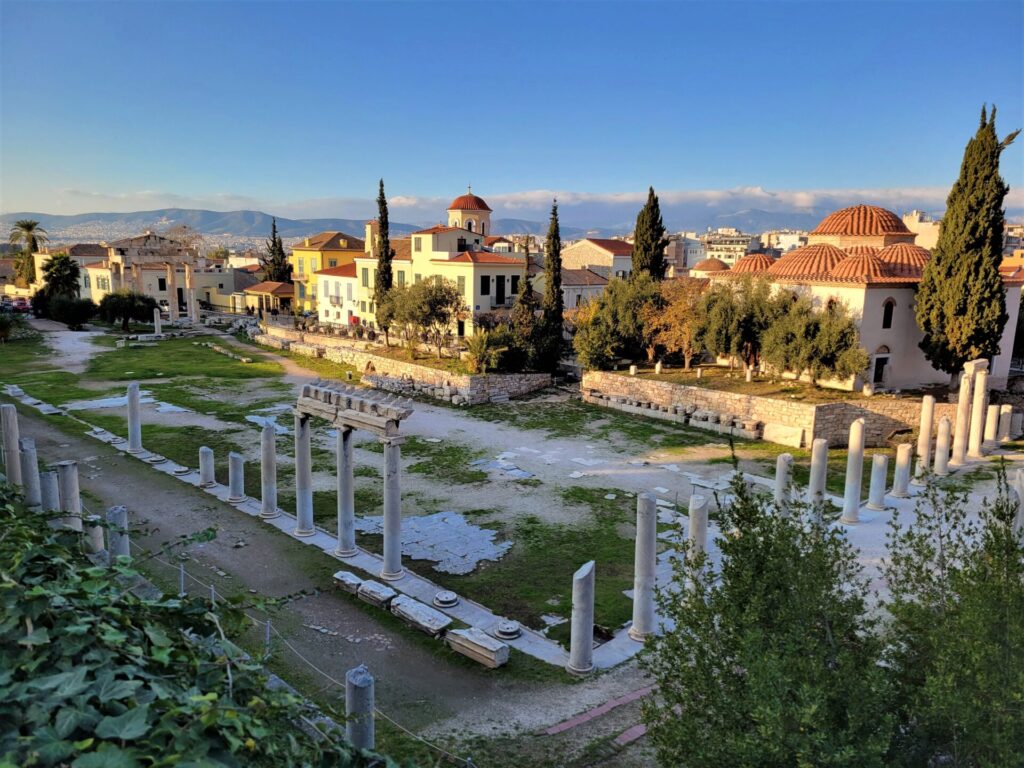
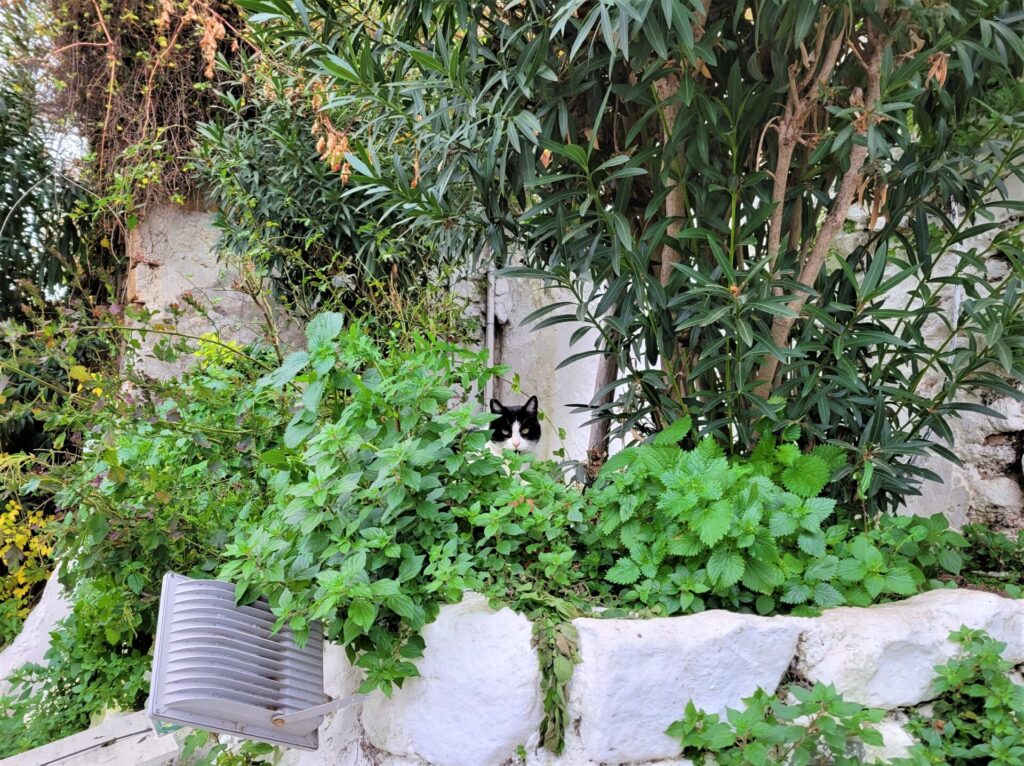
Overall we mostly enjoyed our stay in Athens. I can see how the city could get a poor review from some travelers, especially depending on their choice of neighborhood to stay in. But our neighborhood and apartment were pretty great, and we enjoyed the parks, hills, and the views that were prevalent throughout the city. The parks especially allowed us to avoid the constant traffic noise, which was the most annoying thing to me.
But the winter air quality was good, the weather was reasonably mild (only snowed once), and the orange trees were gorgeous. I also can’t say enough good things about the Acropolis. I do wish the graffiti had higher overall quality, but I didn’t mind the hunt for the most part. I’m not sure if we would’ve liked visiting Athens as much in the middle of summer, but for a winter destination, it was a good choice.
Loved some of the art you were able to capture . The statue with the glass was interesting. Not sure I have ever seen any like it.
As always, a great read. Keep on, going on!! ❤️
Aunt Glenda
Hi Glenda,
We were kind of fascinated by that statue as well. If you can’t tell from the pic, it’s pretty tall. At least 20 feet. It was pretty cool.
Greetings from Saigon. Glad to see you all made it to Athens. It was the first place I traveled to when starting out on a similar journey to what you all are doing. Plus, didn’t hurt it was during the pandemic and Greece was on of the first countries open to tourists. I stayed in Koukaki so not too far away from where you stayed. My top floor penthouse (trust me it wasn’t that glamourous!) looked out toward Philopappos Monument and was a nice 40 minute round trip hike to the top and the view of the Acropolis and Mt. Lycabettus. I think the sweet spot is early spring (like now?) and late fall (September/October) it isn’t super cold but not a lot of tourists.
Kind of has a vibe like Paris in a sense that people that haven’t been have certain expectations after reading/seeing it in movies or books. Then when they get there it’s dramatically different. I enjoy it. Places with just the right amount of grit are great!
Hi Bob,
We hiked up to the top of Mt Lycabettus a bunch. It’s quite the steep climb but we really loved that view. That Paris analogy is a good one. In general, we don’t mind the grit too much either as it tends to provide character.
Dude: I don’t know if you colorize your photos or not but they were most excellent. What do you use for a camera? Hope your stay in the US turns out to have a good result.
Hi Ned,
No real cameras were used in the making of these pictures, just our phones. But they are doing great things with phone cameras these days and I think they all tend to “juice” the colors just a bit anymore. I do a little editing sometimes, but usually not much. My trick, if you can call it that, is to just take a bunch pics and select the handful that are the best.
Thanks for all the useful information! We still haven’t made our way to Athens, but we’ll definitely refer back to this post when we do. The graffiti situation is so interesting. It’s a bummer that so much of it is low-effort, but those pieces on the taller buildings look fantastic.
Hi Mack,
The planned street art pieces definitely overshadow the graffiti, but there are a lot of those, so it’s hard to complain.
Curious, what would you do in a situation where you have a medical situation that requires repatriation to the US? Such as longer term care that exceeds the visa length in the country you are currently visiting.
ACA has special signup periods that might or might not work in order to start timely coverage.
Does your current insurance allow you start US coverage if needed?
Hi Visen,
So far we’ve carried an ACA policy every other year in order to coincide with our planned visits to the US. As far as I know, there’s no special enrollment period that we’d qualify for in one of the off years. But even with an ACA policy in place, I doubt that we’d seek treatment in the US if we were not already in the US at the time. Aside from some super niche specialists, medical care abroad seems to be just as good but at a fraction of the price. If the situation required long term treatment, then we would likely seek out a visa that would allow an extended stay. Or possibly just overstay the tourist visa depending on the amount of time, potential penalties, and our level of desire to return in the future.
Sounds reasonable. BTW, I’ve read somewhere that you can start an ACA policy after being out of the country longer.
I am about to test that out with CoveredCA as I’ll need to go back to the US end of Summer, after being in Croatia since March. I don’t qualify for any subsidies anyway since my wife still works in CA.
If that doesn’t work, it doesn’t seem that there is any way for me to get US insurance until 2024…